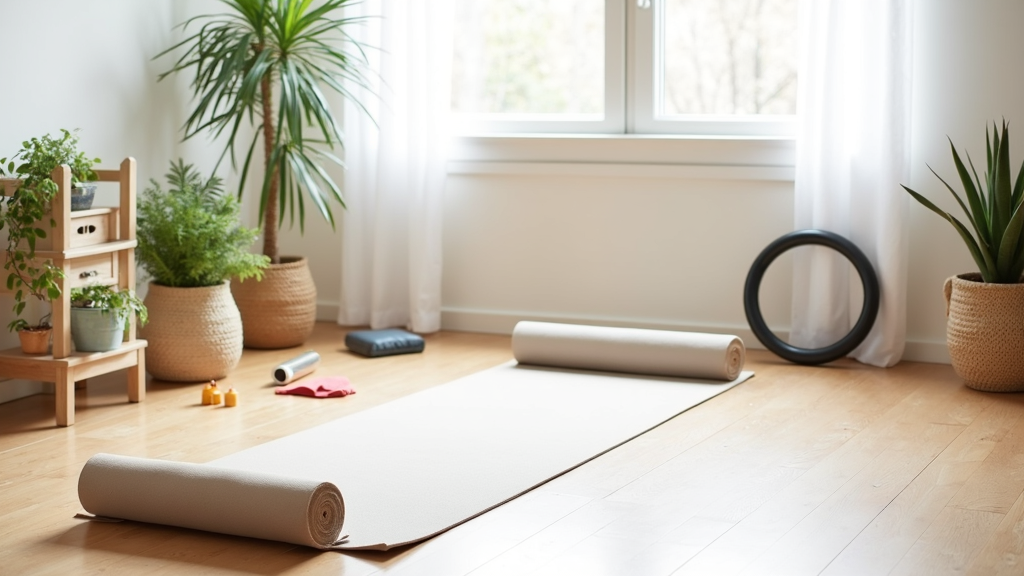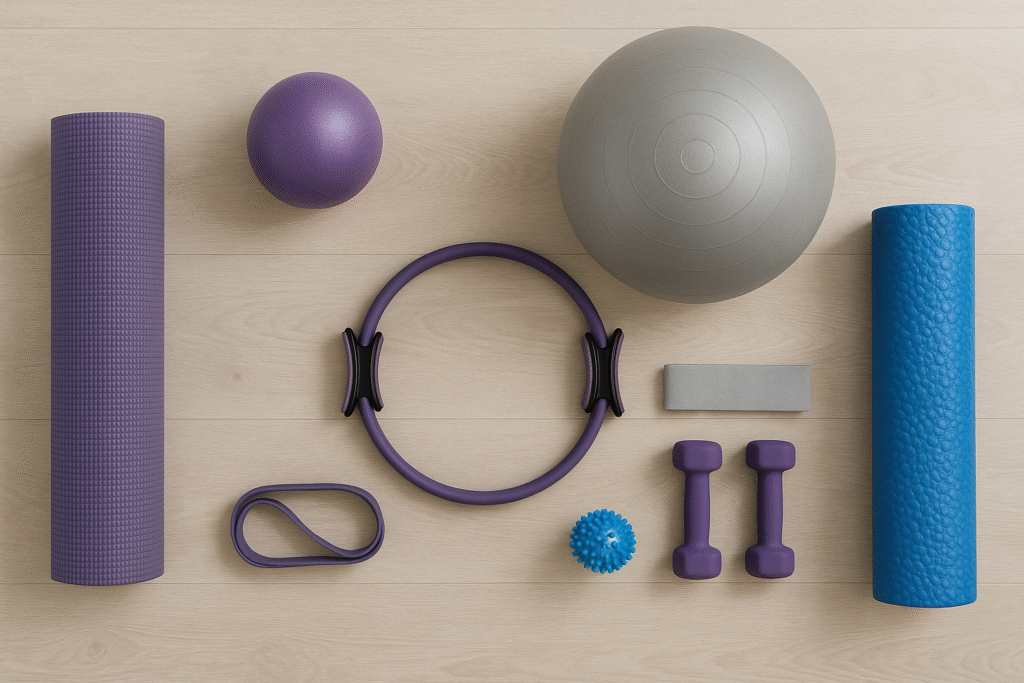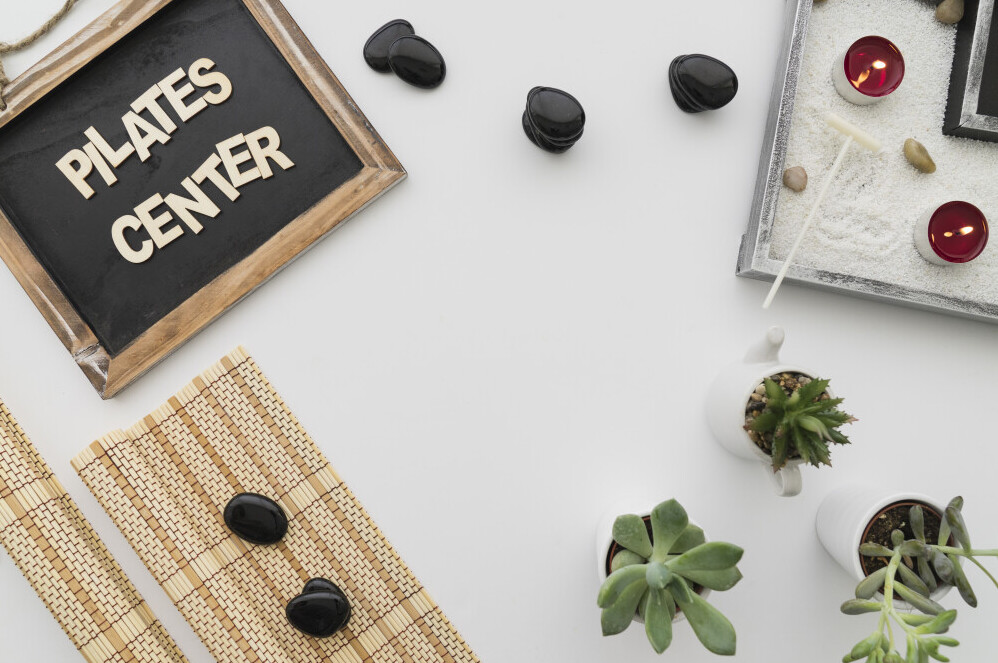
Turning a small space into a cozy home Pilates studio is something I’ve done myself, and it completely changed how I work out. Having a dedicated spot for Pilates makes it way easier to stick to a routine, avoid distractions, and enjoy every session. Whether you’re squeezing in a quick morning stretch or a full workout after a long day, having your own studio setup makes a big difference.
You don’t need a giant room, tons of equipment, or a huge budget to get started. It’s about being intentional with your space, picking the right gear, and adding those little touches that make you want to roll out your mat every single day.
This guide covers how to design a home Pilates studio that feels both inviting and super useful—no matter your space or skill level. From layout ideas and must-have essentials to easy decor hacks and practical storage tips, you’ll track down everything you need to create a Pilates zone you’ll want to return to again and again.
Step 1: Plan Your Ideal Pilates Space
The first move is figuring out where you want to set up. I started in a small living room corner, and it worked surprisingly well! You don’t need a massive area, just enough for your mat and some movement. Here’s what to think about while planning:
Questions to Ask Yourself:
- How much space do I realistically have available?
- Is the space private enough for me to relax and focus?
- Does it get enough light, or could I add a lamp or string lights?
- Will I use a mat only, or do I want space for equipment like a reformer or stability ball?
Popular Home Pilates Studio Locations:
- Living room corners
- Spare bedrooms
- Home offices (just clear a bit of floor space)
- Basement nooks
- Even a section of your bedroom with a foldable mat
Choosing a spot that fits your daily routine is really important. If it’s easy to access and always ready, you’ll be much more likely to use it.
Step 2: Select Essential Pilates Equipment
You don’t need to buy everything at once. I started with just a mat and a resistance band, and that was enough for a ton of workouts. Here’s a handy list to help you create a solid starter kit:
Pilates Gear Worth Having:

- High quality Pilates mat. Look for one that is cushioned and grippy. Pilates mats are usually thicker than yoga mats and can protect your spine during rolling moves.
- Resistance bands. Perfect for stepping up your practice and targeting specific muscles.
- Pilates ring (magic circle). This lightweight ring increases challenge and adds variety to exercises.
- Light hand weights. Great for Pilates sculpting sessions.
- Stability or exercise ball. Fun for balance work and stretching.
- Foam roller. Good for warm up, cool down, and releasing tight muscles.
- Reformer machine. If you’re a serious Pilates enthusiast and have the budget and space, a home reformer is a pretty cool investment.
Start simple and only add gear as you learn what you enjoy using the most. It’s easy to upgrade as your practice grows. If you want to add some extra challenge or comfort, small equipment like a balance pad or yoga block can also be useful, but none of it is strictly required at first.
Step 3: Make the Space Inviting and Comfortable

A cozy vibe really makes a difference. I always look forward to my Pilates time because I’ve made my space somewhere I actually want to hang out. Try some of these ideas to set the mood and keep things comfortable:
Ways to Add Comfort and Style:
- Add a small area rug for warmth and to define the workout “zone.”
- Use soft, warm lighting. Lamps or battery powered candles work well.
- Keep a soft throw blanket nearby for stretching and relaxation at the end of your session.
- Display a few plants to freshen the air and add a touch of nature.
- Personalise the wall with a favourite print, quote, or inspirational artwork.
Even if you’re tight on space, adding one or two comfort touches can help you look forward to your workouts. You can also bring in elements of aromatherapy with essential oils or incense, as long as the scent makes you feel relaxed. Creating a pleasant sensory environment goes a long way toward making your Pilates adventure truly enjoyable.
Step 4: Maximize Function with Smart Storage
Keeping things tidy is more important than it sounds. I stash my bands in a basket and roll my mat into a corner bin to keep everything in one spot and out of the way. Staying organised makes it way easier to start a session without having to hunt for your gear. When your area is organised, even a tiny space seems much larger and more inviting!
Storage Tricks to Try:
- Use a decorative basket or bin to keep mats, bands, and small items together.
- Install floating shelves for lightweight gear, towels, and water bottles.
- Hang hooks on the wall for foam rollers or resistance rings.
- Try a storage ottoman that doubles as seating for putting on socks or just catching your breath after class.
- If you have a reformer, look for under bed or couch storage.
Keeping your setup organised not only saves you time, but it also keeps your space looking calm and uncluttered. Open baskets are perfect for easy access, while closed storage keeps your workout gear out of sight if you’re sharing the room.
Step 5: Set Up for Motivation and Focus
Little motivational tricks help keep your workout on track. I keep my phone on airplane mode and set a favourite playlist before I start. Some people like adding a small speaker, while others prefer silence. Figure out what helps you focus and makes the space feel like “you.”
Simple Ways to Take Up Your Studio:
- Set a Bluetooth speaker nearby with a mellow playlist or calming sounds.
- Keep a water bottle close so you can stay hydrated.
- Have a simple towel or mat cleaner ready so it’s easy to wipe down gear before and after.
- Print or write out a few favourite Pilates flows, or keep a tablet handy for following your favourite YouTube instructors.
A little pre workout routine, like lighting a candle or doing a quick stretch, can signal to your brain that it’s time for Pilates. You might also hang a small dry erase board where you jot down motivational reminders, new moves to try, or even your goals for the week.
Troubleshooting Common Home Pilates Studio Questions
What if my space feels too small for Pilates?
I’ve worked out in rooms barely wider than my mat. Stick to mat based routines, skip jumping moves, and use the wall for added support. A foldable mat is handy if you need to reclaim the space after your session. If you’re short on room, try minimalist routines that use just bodyweight and no props, or stack your gear up vertically when not in use.
What can I do about noise and distractions?
- Let housemates know when you’ll be working out.
- Use headphones with noise cancelling features if you need to tune out background sounds.
- Add curtains or a room divider if you want a touch of privacy.
- Consider scheduling your workout for quieter parts of the day, such as early morning or late evening, to avoid interruptions.
Do I need expensive equipment to get a good workout?
Not at all! Most Pilates routines can be done with just a mat. Bands and rings are affordable add ons, but not required. Your own bodyweight is plenty to get effective workouts. As you get deeper into your practice, you can add more tools as your budget and space allow.
Final Tips and Your Next Steps
A home Pilates studio should work for you, not the other way around. Start simple, bring in comfort, and make it your own. Everything from lighting to the basket holding your bands can help you actually look forward to your next session. By making your Pilates area feel like your own personal retreat, you’ll naturally want to spend more time on your mat and build a habit that sticks.
Your Home Pilates Action Plan:
- Pick a small space and clear it for Pilates use.
- Gather just a couple of essentials—start with a mat and a resistance band.
- Add in some comfort touches (like a plant or soft lamp).
- Organise your gear so it’s easy to grab and put away.
- Tweak your setup until it feels like a space you can’t wait to return to!
What’s one thing you’d add to your home Pilates space? I’d love to hear your ideas in the comments!
